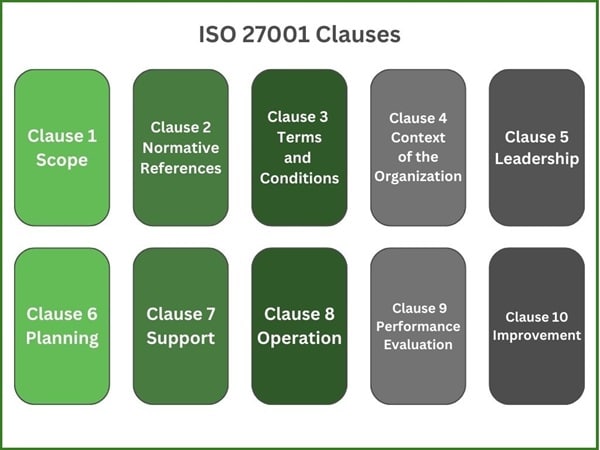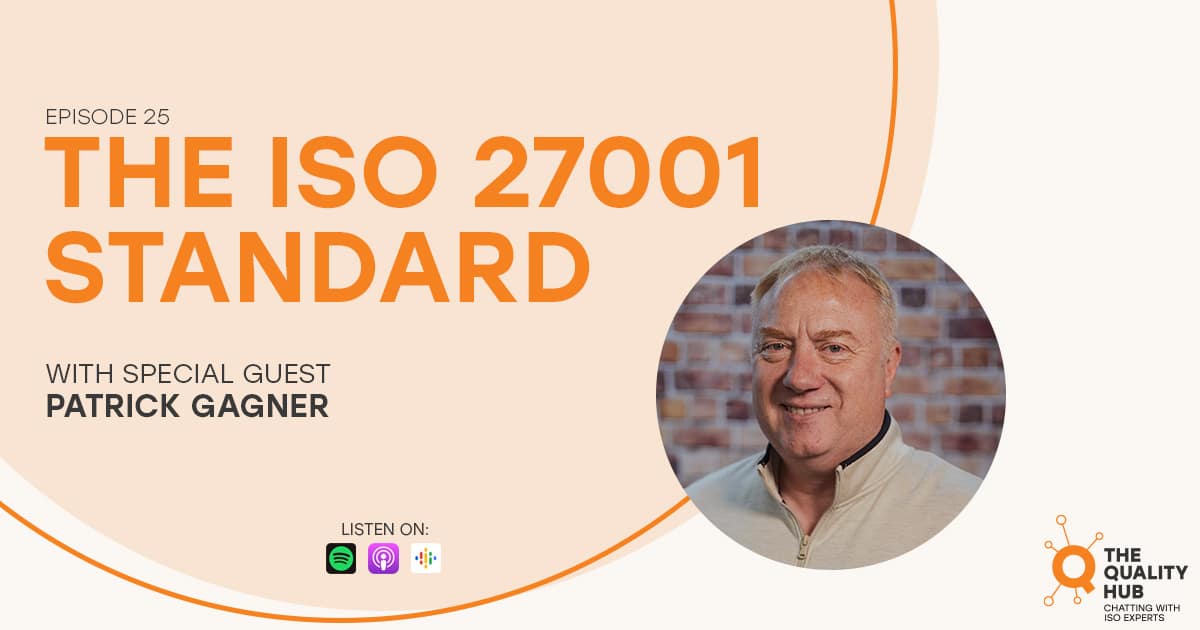ISO 27001 Clause 4 Explained
What is ISO 27001 Certification?
ISO 27001 certification stands as a globally recognized benchmark for safeguarding information security. It offers a comprehensive and structured approach for organizations to design, implement, maintain, and continually enhance an Information Security Management System (ISMS).
This certification reflects an organization’s proactive stance in identifying potential security threats, deploying tailored controls to reduce those risks, and establishing clear protocols to protect critical data—customer details, financial transactions, or proprietary intellectual property.
Earning ISO 27001 certification signals a deep commitment to upholding the core principles of information security: confidentiality, integrity, and availability. It reassures customers, business partners, and stakeholders that your organization embraces industry-leading practices, ensuring sensitive data remains secure in a rapidly evolving digital landscape.
Get a Free Quote
ISO 27001 Certification Includes an Audit
The certification journey includes a rigorous, independent audit by an accredited body, validating that the organization meets the standard’s requirements and sustains effective information security management practices over time. This achievement demonstrates resilience and builds lasting trust.
What is ISO 27001 Clause 4 About?
ISO 27001 Clause 4 is about the context of the organization and focuses on understanding the internal and external factors that affect the Information Security Management System (ISMS). It sets the groundwork for establishing a robust ISMS by requiring organizations to align their security strategies with their specific business environment.

Here’s a Breakdown of the Key Components of Clause 4:
Understanding the Organization and its Context (Clause 4.1):
The organization must identify and assess internal and external factors that could influence its ISMS. This includes industry trends, legal requirements, technological changes, and business objectives that affect information security.
Understanding the Needs and Expectations of Interested Parties (Clause 4.2):
The organization must determine who its interested parties are (e.g., customers, employees, suppliers, regulators) and understand their needs and expectations related to information security. These parties may impose certain requirements that the organization must meet.
Determining the Scope of the ISMS (Clause 4.3):
The organization needs to define the scope of its ISMS, clearly specifying what parts of the business the ISMS will cover. The scope should consider the context, interested parties, and the organization’s products, services, and processes.
Information Security Management System (Clause 4.4):
The organization is required to establish, implement, maintain, and continually improve the ISMS in accordance with the requirements of ISO 27001.
In essence, Clause 4 ensures that an organization tailors its ISMS to fit its unique business context, including the relevant security needs and expectations of its stakeholders. By doing this, the organization sets a solid foundation for effective information security management that aligns with its specific risks and goals.
What’s the Difference between ISO 9001 Clause 4 and ISO 27001 Clause 4?
ISO 9001 Clause 4 and ISO 27001 Clause 4 both deal with understanding the context of the organization, but they serve different purposes due to the distinct focus of each standard. Here’s a breakdown of the differences:
1. Purpose and Focus:
ISO 9001 (Quality Management):
Clause 4 in ISO 9001 is focused on the overall quality management context. Its primary goal is to help organizations understand the factors that affect their ability to provide products and services that meet customer requirements and comply with regulations, ensuring continuous improvement in quality.
ISO 27001 (Information Security Management):
Clause 4 in ISO 27001 is focused on information security. It aims to ensure that an organization understands the internal and external factors that could impact the security of information and that it aligns its ISMS with these factors, including risks and stakeholder expectations related to confidentiality, integrity, and availability of information.
2. Key Elements:
ISO 9001 Clause 4 includes:
- Understanding the organization and its context: Identifying the internal and external factors that affect the Quality Management System (QMS) and its ability to achieve the intended quality outcomes.
- Understanding the needs and expectations of interested parties: Focusing on customers, suppliers, and regulatory bodies to ensure their expectations regarding quality are met.
- Determining the scope of the QMS: Defining the boundaries and applicability of the QMS based on the organization’s context and objectives.
- QMS and its processes: Establishing, implementing, maintaining, and improving a QMS to ensure the quality of products and services.
ISO 27001 Clause 4 includes:
- Understanding the organization and its context: Identifying factors (both internal and external) that impact information security, including technological changes, regulatory requirements, and business strategies.
- Understanding the needs and expectations of interested parties: Focusing on stakeholders who have information security requirements, such as customers, regulatory bodies, partners, and employees.
- Determining the scope of the ISMS: Defining the scope of the ISMS based on the organization’s information security risks, the needs of stakeholders, and the legal and regulatory requirements.
- ISMS and its processes: Establishing, implementing, maintaining, and continually improving an ISMS to protect information security.
3. Outcome:
ISO 9001: The outcome of Clause 4 in ISO 9001 is a Quality Management System (QMS) designed to ensure customer satisfaction, improve product/service quality, and enhance operational efficiency.
ISO 27001: The outcome of Clause 4 in ISO 27001 is an Information Security Management System (ISMS) that addresses information security risks and ensures the confidentiality, integrity, and availability of sensitive information.
4. Focus on Risks:
ISO 9001: While risks are considered, the focus is more on how factors can affect the quality of products and services.
ISO 27001: Risks are central to ISO 27001, and Clause 4 emphasizes understanding risks related to information security, such as cyber threats, data breaches, and compliance risks.
Summary:
ISO 9001 Clause 4 focuses on the context of quality management and delivering high-quality products and services that meet customer needs and regulatory requirements.
ISO 27001 Clause 4 centers on the context of information security, ensuring that the organization’s ISMS addresses relevant risks and protects critical information.
The key difference is that ISO 9001 is about quality management and improving operational performance, while ISO 27001 is about information security and managing the risks related to data protection.

How Much Time Does it take to get ISO 27001 Certification?
ISO 27001 certification takes 4 to 6 months to complete. If you are implementing multiple standards at the same time, it could take longer.
How Much Does it Cost to get ISO 27001 Certification?
Depending on the size and complexity of your company, it can cost between $18,000 and $23,000 to prepare for ISO 27001 certification.
Helpful Resources: The ISO 27001 Standard Podcast
In this episode of “The Quality Hub” podcast, host Xavier Francis interviews Patrick Gagner, a Cyber Consultant at Core Business Solutions, about the ISO 27001 and Information Security Management System. Pat explains ISO 27001 as an Information Security Management System (ISMS), emphasizing its risk-based approach to safeguarding information confidentiality, integrity, and availability. Listen Now
What is Annex A?
With ISO 27001 certification, Annex A plays a critical role as it provides a comprehensive list of information security controls that organizations can use to mitigate risks identified in their Information Security Management System (ISMS).

These controls are categorized into 14 domains, covering various aspects of information security such as access control, encryption, physical security, and incident management. Annex A helps organizations identify the specific controls they need to implement based on their unique risks and business environment, ensuring that the ISMS is tailored to address relevant security challenges.
It’s important to note that Annex A is not a checklist of mandatory requirements but rather a catalog of controls that organizations can choose from as appropriate to their specific needs. During the risk assessment process, an organization identifies its security risks and then selects controls from Annex A (or alternative controls) to mitigate those risks.
Annex A essentially serves as a reference to ensure that the organization has considered a wide range of security areas, providing a structured way to safeguard the confidentiality, integrity, and availability of information.
The use of Annex A demonstrates a proactive and structured approach to information security within the organization’s ISO 27001 framework.
Customer Reviews


